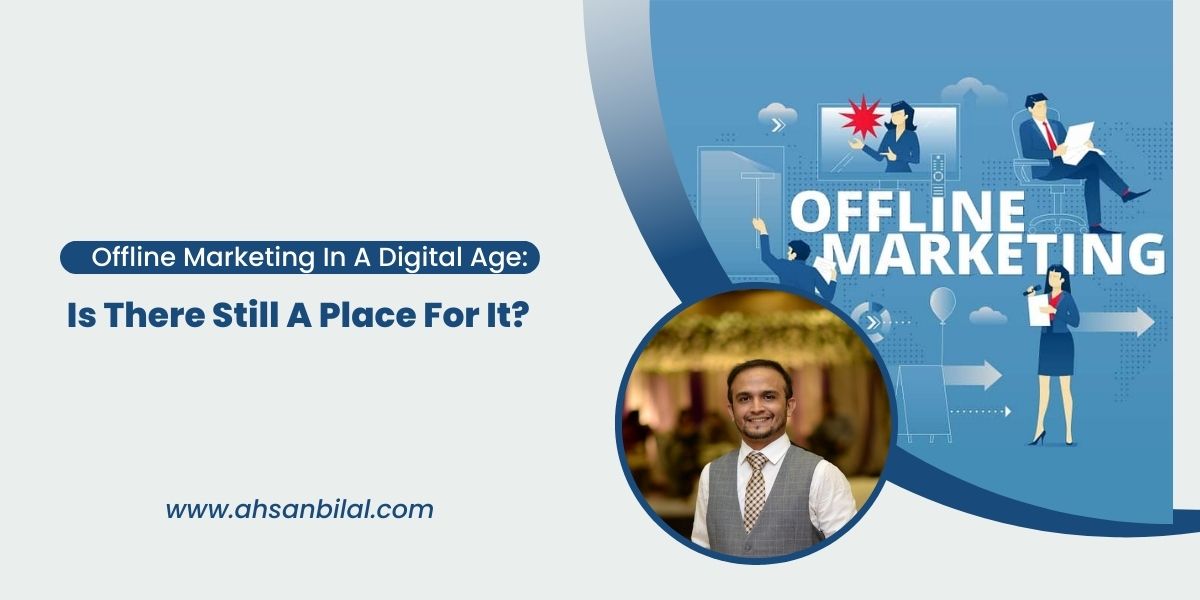Offline Marketing In A Digital Age: Is There Still A Place For It?
In the era of tweets, likes, and shares, where digital marketing seems to reign supreme, one might wonder if offline marketing still holds any relevance. With smartphones in every pocket and social media dominating our online interactions, it’s easy to overlook the traditional methods of marketing that once defined the industry. However, as we navigate this ever-evolving landscape, it becomes apparent that offline marketing still has a significant role to play in capturing attention, fostering connections, and driving real-world engagement.
The Digital Revolution: Changing The Game
The advent of the internet and the proliferation of digital technologies have revolutionized the way businesses market their products and services. Online platforms offer unparalleled reach and targeting capabilities, allowing marketers to connect with audiences across the globe in an instant. From social media ads to email campaigns, digital marketing has become the go-to strategy for businesses looking to expand their reach and grow their customer base.
The Rise Of Digital Marketing: Convenience At Your Fingertips
Digital marketing offers unmatched convenience and accessibility. With just a few clicks, businesses can launch advertising campaigns, track metrics, and adjust their strategies in real-time. The ability to target specific demographics and measure the effectiveness of marketing efforts has made digital channels indispensable for modern businesses.
Challenges Of Digital Marketing: Standing Out In A Crowded Space
However, the widespread adoption of digital marketing has also led to increased competition and saturation. As more businesses vie for consumers’ attention online, standing out from the crowd has become increasingly challenging. Ad fatigue, banner blindness, and algorithm changes pose significant hurdles for marketers looking to make an impact in the digital realm.
Offline Marketing: A Blast From The Past Or A Viable Strategy?
Amidst the digital frenzy, offline marketing strategies offer a refreshing alternative. While digital channels provide instant gratification and measurable results, offline tactics tap into the power of physical interactions and human connections. From face-to-face meetings to experiential events, offline marketing allows businesses to create memorable experiences that resonate with consumers on a deeper level.
The Power Of Tangibility: Making Real Connections
One of the key advantages of offline marketing is its tangible nature. Physical interactions with products or promotional materials evoke a sense of authenticity and trust that digital channels often lack. Whether it’s sampling a product at a trade show or receiving a personalized mailer in the mailbox, offline marketing creates touchpoints that leave a lasting impression on consumers.
Tapping Into The Senses: Engaging Audiences In A Multisensory Experience
Offline marketing also provides opportunities to engage multiple senses, creating immersive experiences that captivate audiences. From visually stunning pop-up displays to interactive demonstrations, offline campaigns appeal to sight, sound, and touch in ways that digital ads cannot replicate. By engaging multiple senses, businesses can create memorable moments that leave a lasting impact on consumers’ minds.
Human Touch: Building Trust Through Face-To-Face Interaction
Perhaps the most compelling aspect of offline marketing is its ability to foster genuine connections through face-to-face interaction. Meeting customers in person allows businesses to build rapport, address concerns, and provide personalized assistance in ways that online interactions simply cannot match. Whether it’s a handshake, a smile, or a friendly conversation, the human touch plays a crucial role in building trust and loyalty with consumers.
Offline Marketing Strategies In A Digital World
From experiential events and guerrilla marketing stunts to print media and direct mail campaigns, there are countless offline marketing strategies that businesses can leverage to stand out in a digital world. By combining the strengths of offline and online channels, businesses can create integrated marketing campaigns that engage consumers across multiple touchpoints and drive real-world results.
Conclusion: Embracing The Blend Of Old And New
In conclusion, while digital marketing continues to dominate the marketing landscape, offline strategies still hold significant value in today’s digital age. By embracing the blend of old and new, businesses can create holistic marketing campaigns that capture attention, foster connections, and drive meaningful engagement with consumers both online and offline. Whether it’s shaking hands at a networking event or scrolling through a social media feed, the key to success lies in finding the right balance between offline and online marketing efforts.










